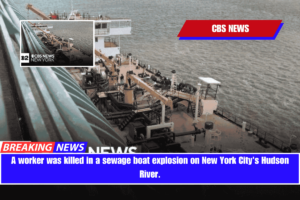In a historic launch on April 1, 2025, SpaceX successfully sent a crew of four international adventurers into space aboard the Crew Dragon “Resilience”. The mission, called Fram2, marks the first-ever human spaceflight to orbit both the North and South Poles.
The journey kicked off at 9:46 p.m. EDT from NASA’s Kennedy Space Center in Florida, making history with a unique flight path and a one-of-a-kind crew.
Who Is on the Fram2 Mission?
The crew of Fram2 includes four explorers from different backgrounds:
- Chun Wang – A Chinese-born bitcoin entrepreneur living in Norway. He funded the mission and serves as mission commander.
- Jannicke Mikkelsen – A Norwegian cinematographer, named the vehicle commander.
- Rabea Rogge – A German robotics expert, acting as mission pilot.
- Eric Philips – An Australian polar guide and adventurer, serving as the crew’s medical officer.
Chun Wang, inspired by past private missions, chartered the entire flight from SpaceX and invited three fellow explorers he had only met once on a previous polar expedition.
Why Is Fram2 So Historic?
This mission is the first crewed spaceflight to orbit directly over both poles—a unique and challenging flight path that no astronaut crew has taken before. While polar orbits are common for satellites, this is the first time humans have done it.
The name “Fram2” honors the legendary Norwegian exploration ship Fram, which carried Arctic pioneers in the 1800s. A small piece of the ship’s teak wood even joined the mission aboard Crew Dragon.
What Is the Mission’s Purpose?
The crew plans to complete 22 scientific and educational experiments during the mission, including:
- Capturing aurora borealis and aurora australis from space
- Growing oyster mushrooms in microgravity
- Testing compact space exercise equipment
- Taking the first X-ray image of a human body in space
- Using Starlink’s laser internet for high-speed data transfer
The flight is expected to complete 55 orbits over the poles and last 3 days and 14 hours, ending with a Pacific Ocean splashdown off southern California.
A New Era for Space Access
Fram2 is SpaceX’s third private space tourism mission, and while none of the crew are licensed pilots or professional astronauts, they underwent over a year of training.
“Space tourism” isn’t quite the right term, says Mikkelsen, pointing out that the rigorous training feels more like preparing for a serious expedition than a vacation.
Rogge, the mission pilot, emphasized how automated spacecraft like Crew Dragon are breaking down traditional astronaut barriers:
“We should design space for everyone—not just superhumans,” she said.
Fram2’s Flight Path: How It Works
To reach polar orbit, SpaceX launched the rocket due south from Florida, a rare move for a crewed mission. This route takes the spacecraft over:
- Florida, including Miami
- Cuba, Panama, and just west of Ecuador and Peru
SpaceX ensured the capsule’s path avoids populated areas in case of emergencies. Normally, such polar launches happen from California, but Fram2 is the first piloted polar launch from the East Coast.
Connecting Earth and Space Through Auroras
The crew is inviting the public to participate by photographing the auroras (northern and southern lights) at the same time Fram2 is flying overhead.
So far, over 2.2 million citizen scientists have been encouraged to take part, and local observatories are also gathering data. The goal is to understand more about how auroras impact Earth and satellite technologies.


















Leave a Reply